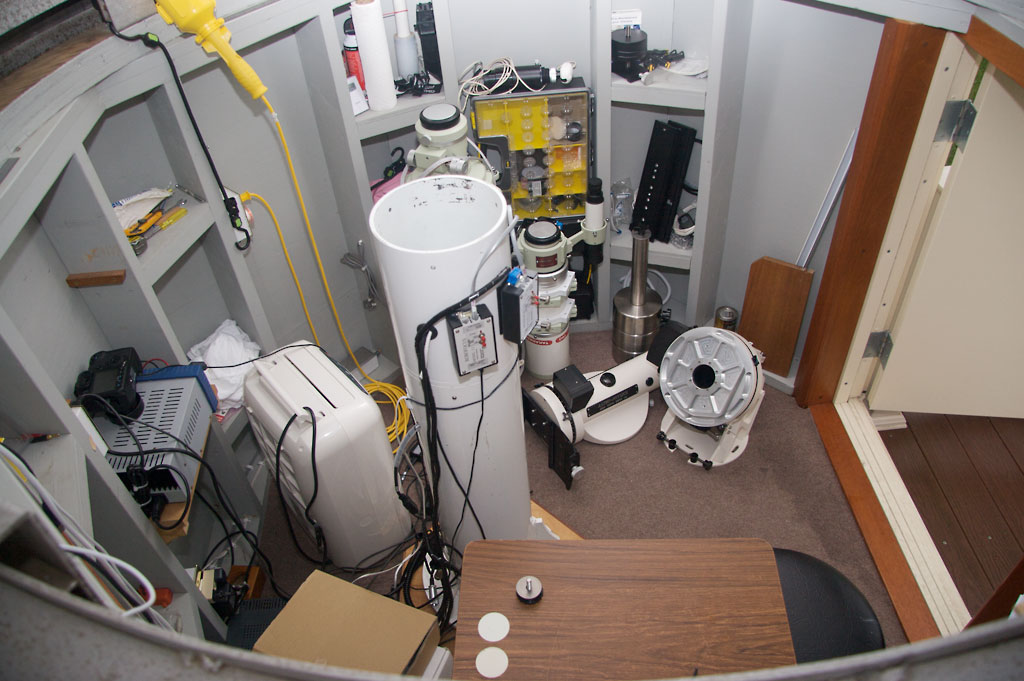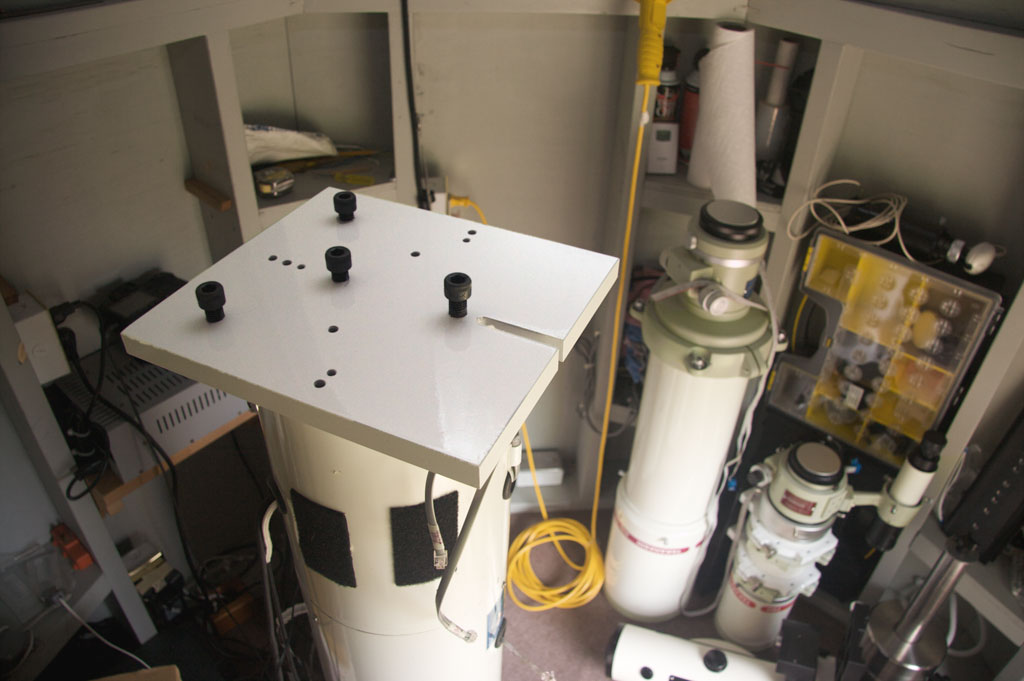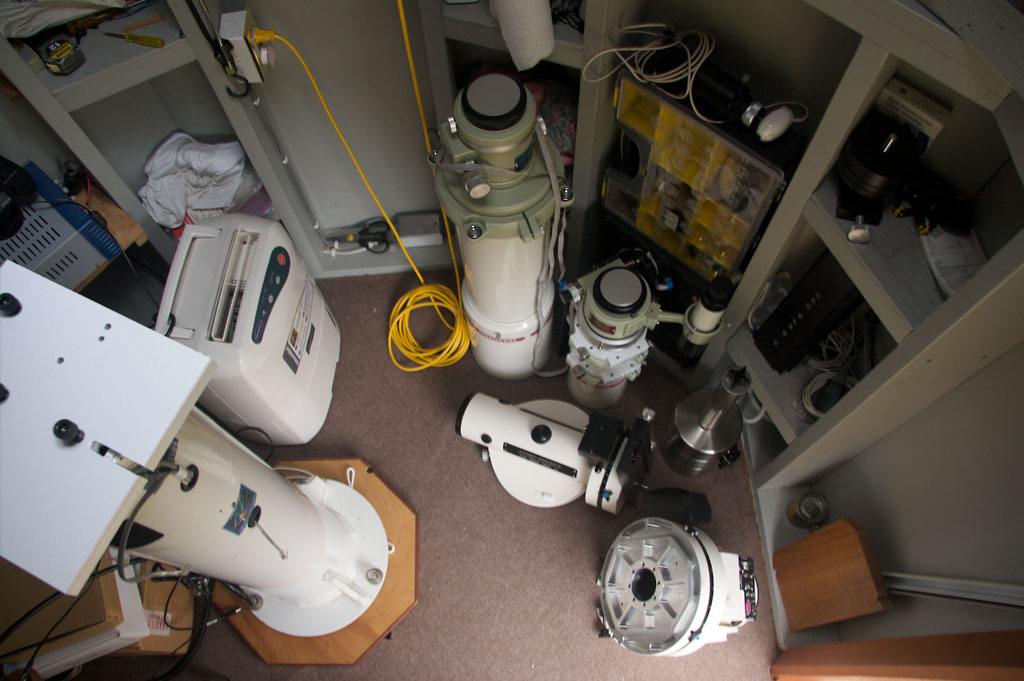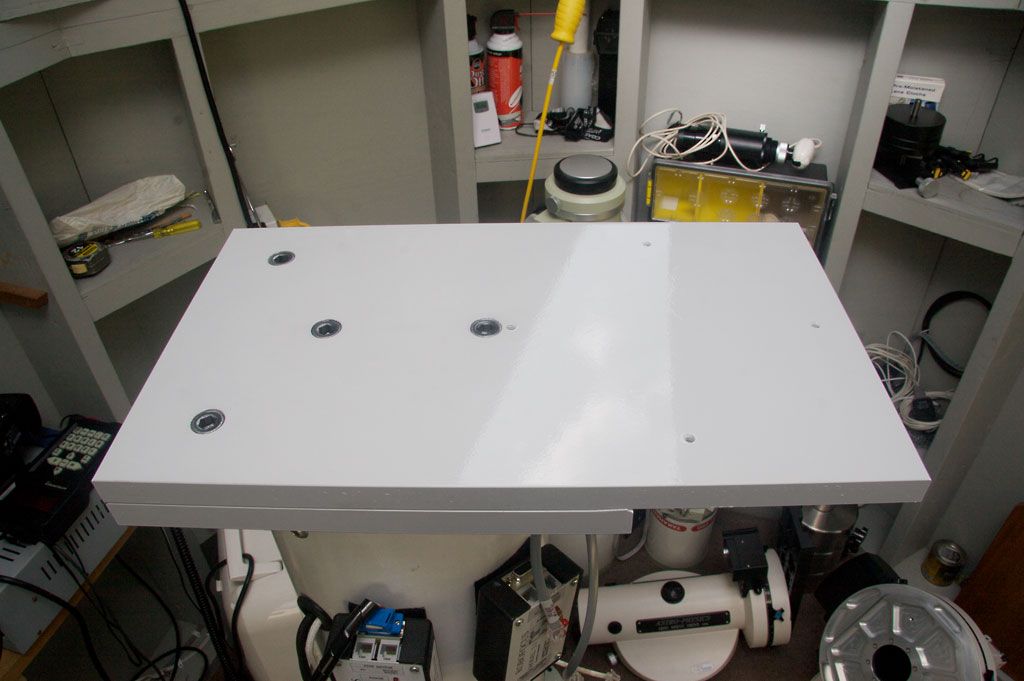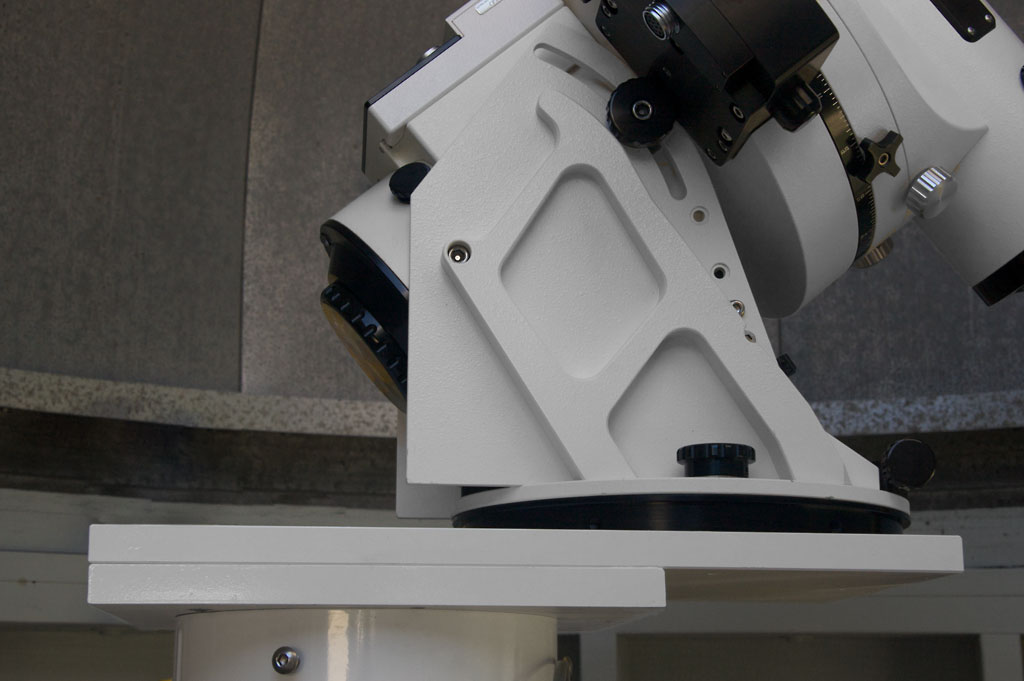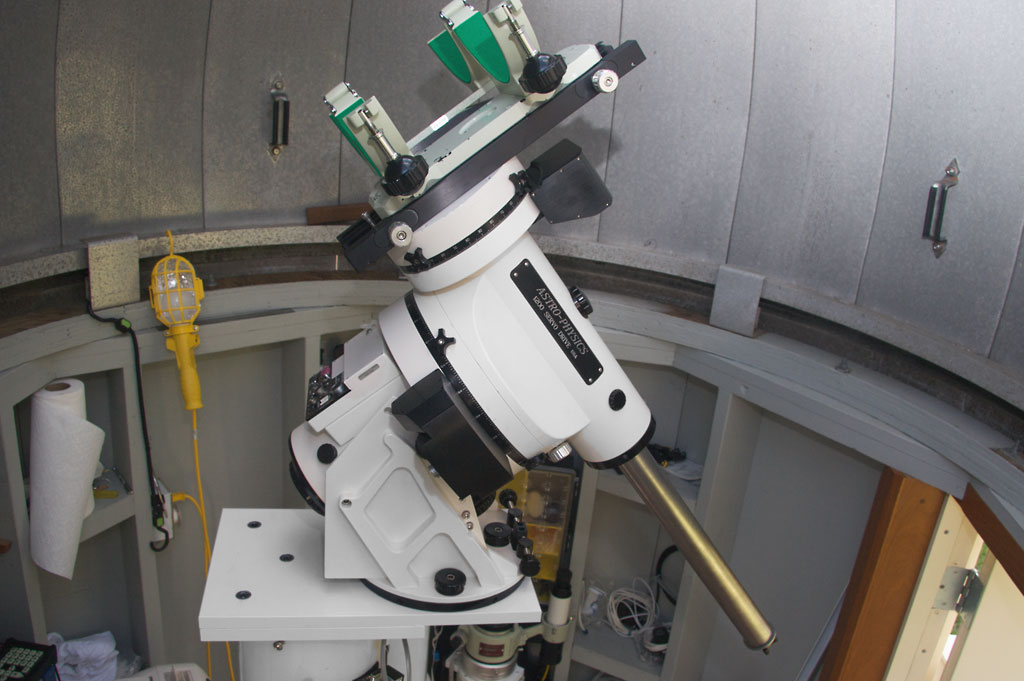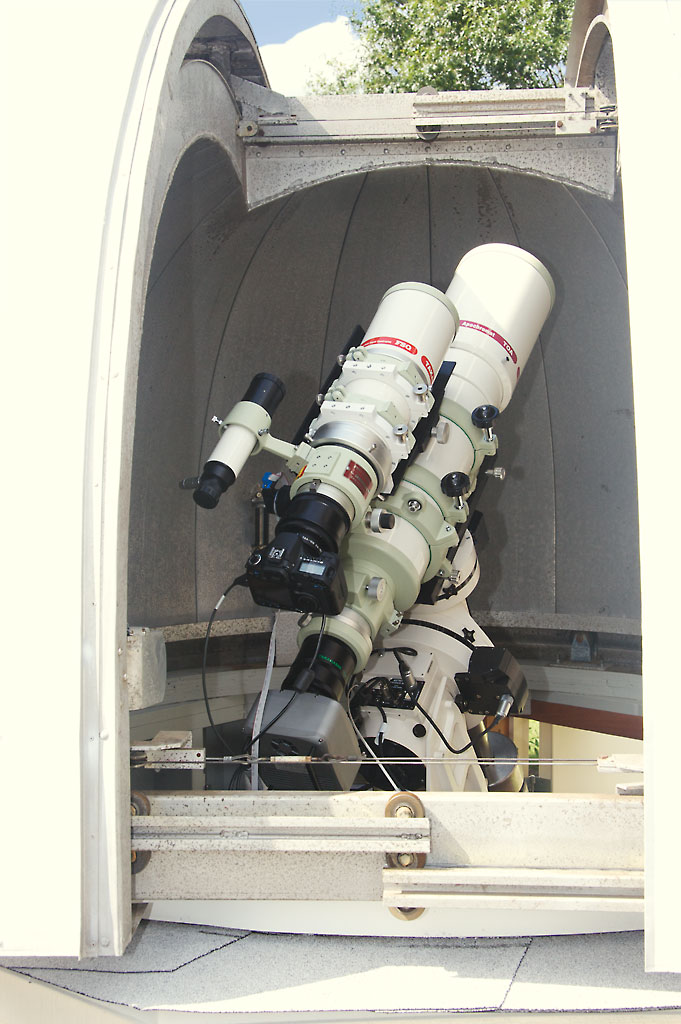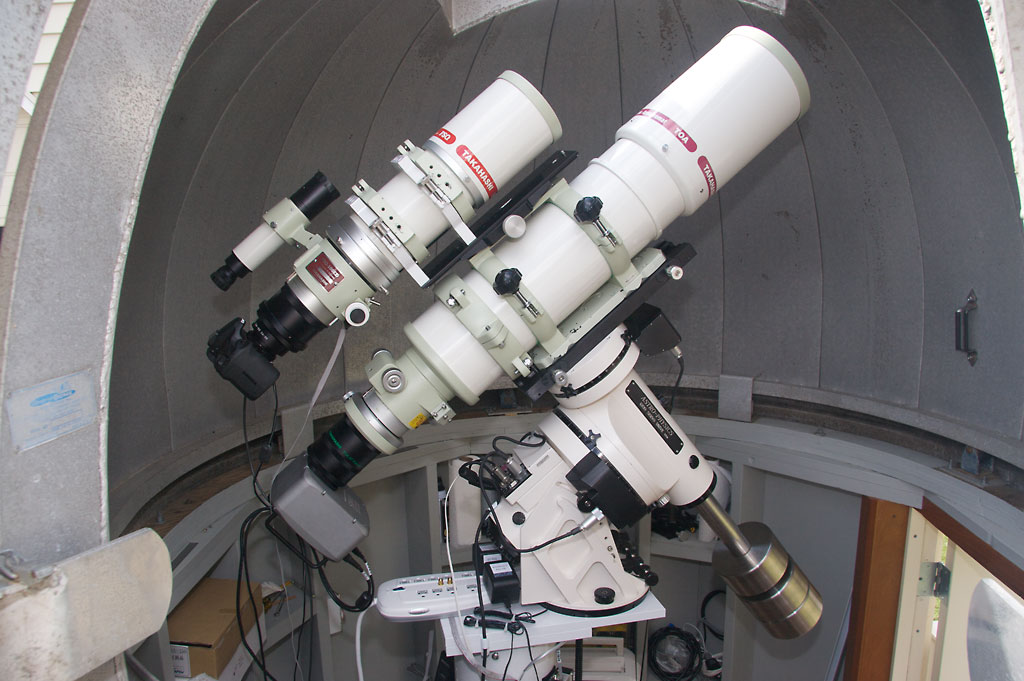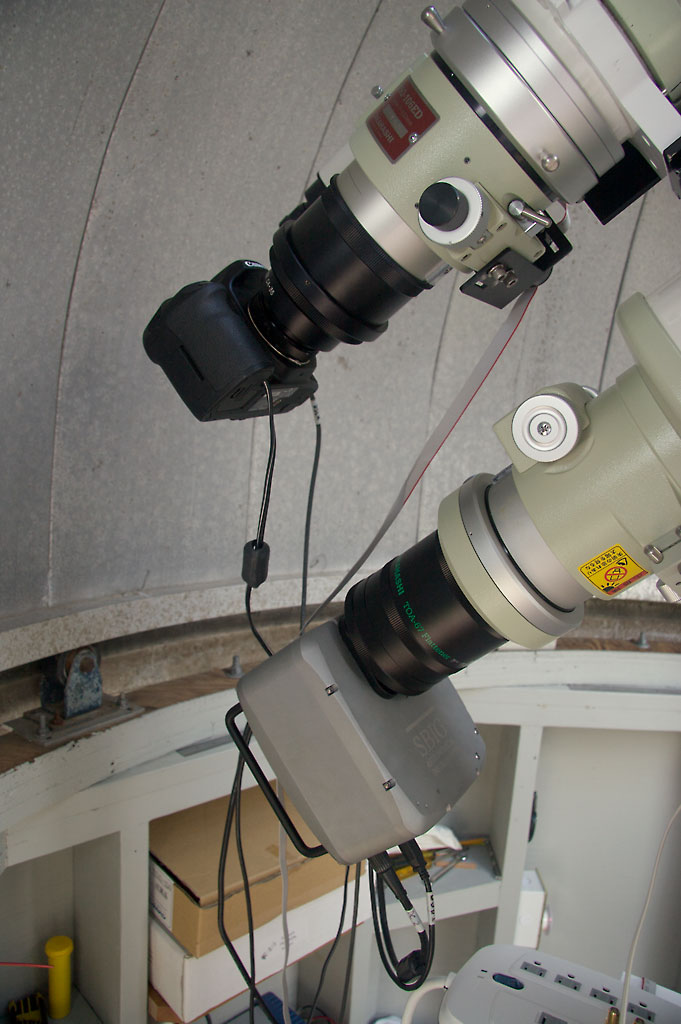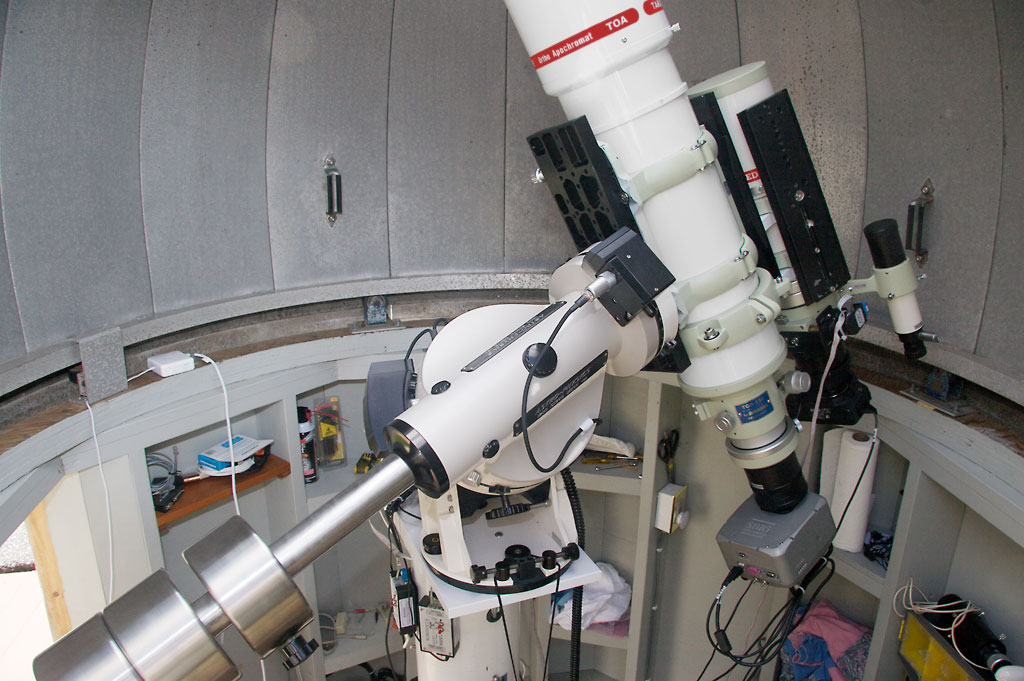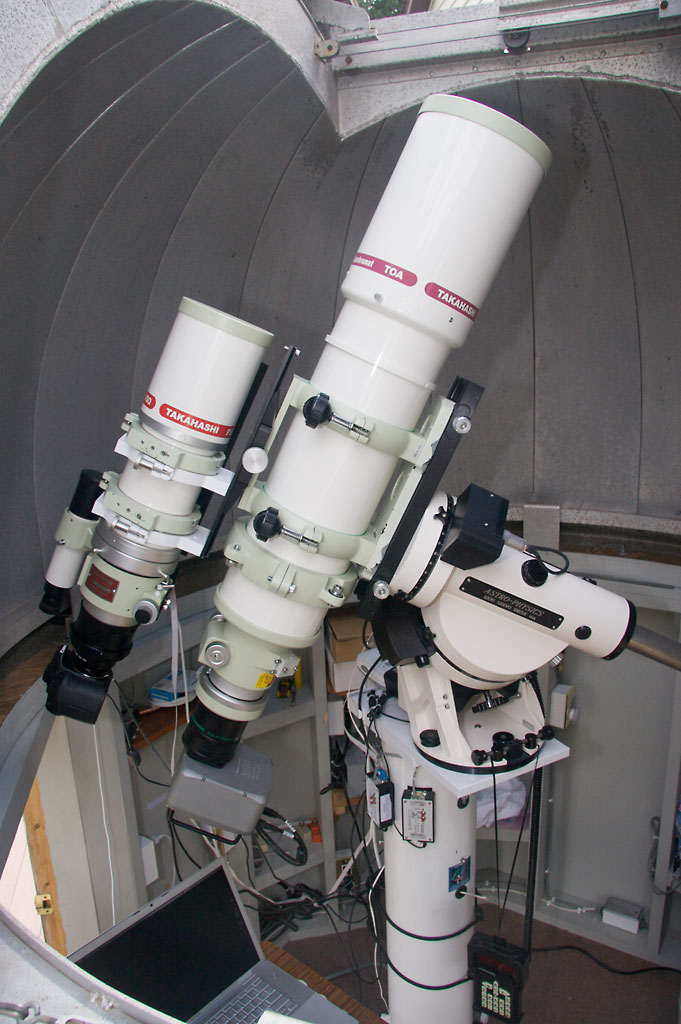| August 29 2009 When I designed my observatory my main telescope was an 8" Meade on a fork mount. Proper dome geometry required the telescope pier to be 15 cm (six inches) south of the center of the dome, and that's the way I built it. When I put my Meade on a German Equatorial Mount (GEM), proper geometry required the telescope pier to be in the center of the dome. I did nothing about it, and the discrepancy had no visible effect whatsoever. More recently, however, I have obtained a Takahashi TOA-150 refractor, which is much longer than any telescope that I had previously used in my small (2-meter dome) observatory. In some attitudes of the mount there was insufficient clearance between the telescope focuser and the wall of the observatory to permit mounting a camera. Since the pier and its 725 kg (1600 lb.) concrete base could not be moved 15 cm northward in any circumstance, and the observatory building could be moved 15 cm southward only with the greatest of difficulty, I decided to bolt a 2 cm (3/4") steel plate to the existing pier top, with the new plate extending 15 cm northward. Such an arrangement is called a cantilever. It allowed me to move the GEM 15 cm northward without making any other changes. The very excellent Circle Machine Shop in Glen Burnie, MD, fabricated the steel cantilever plate and drilled such holes as were necessary in the existing top plate and the new plate to accommodate the Astro-Physics 1200 GTO mount. I primed the original plate (second photo below) and the cantilever plate and I painted both plates with white high-gloss epoxy appliance enamel. |
